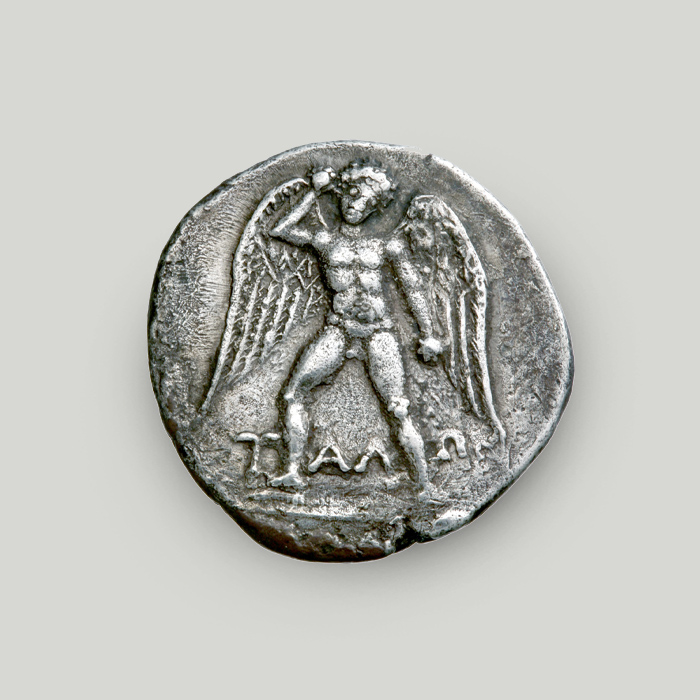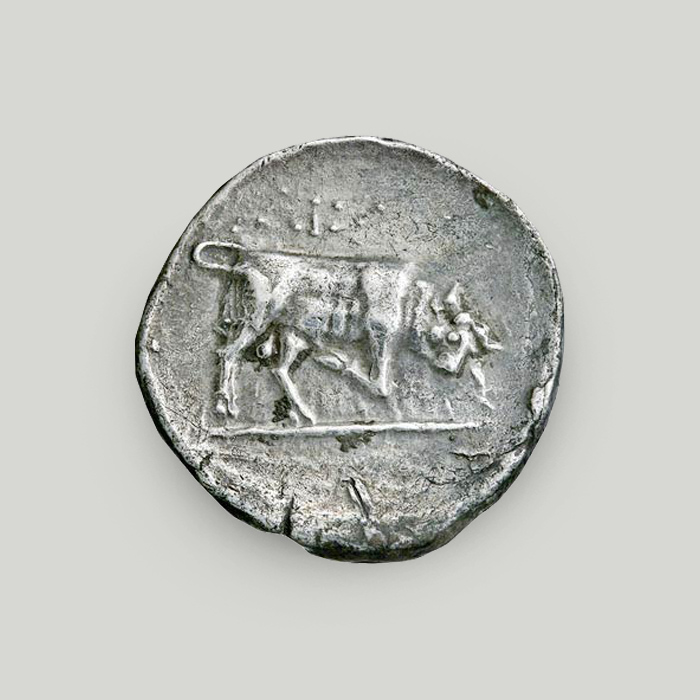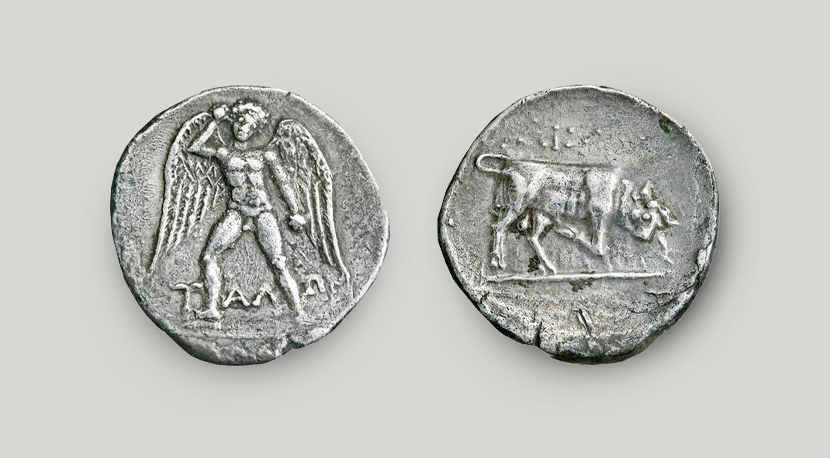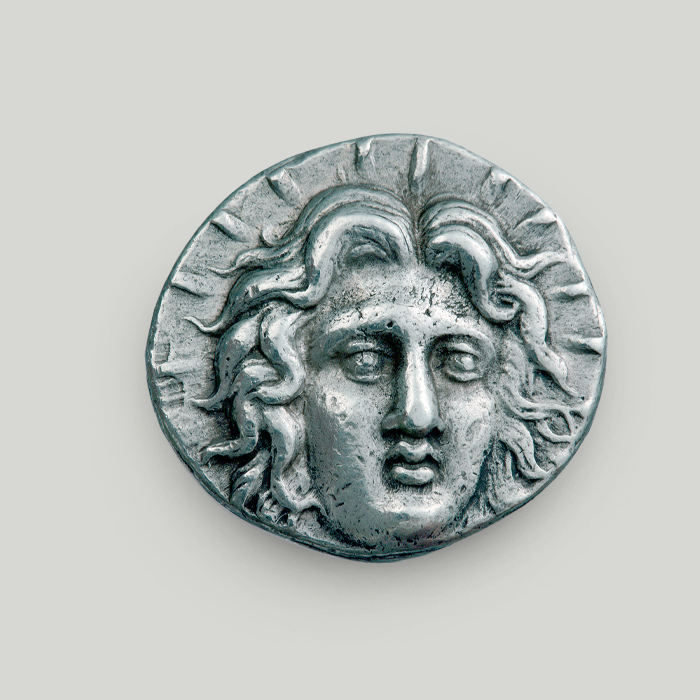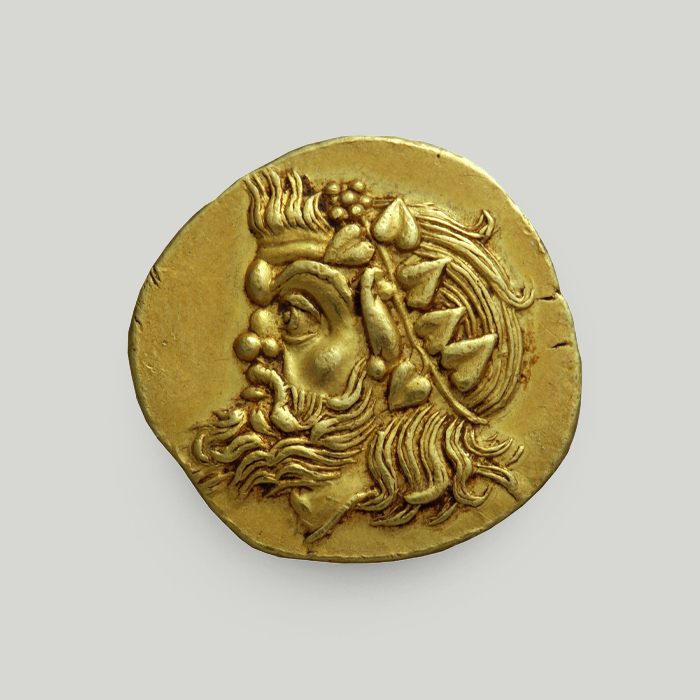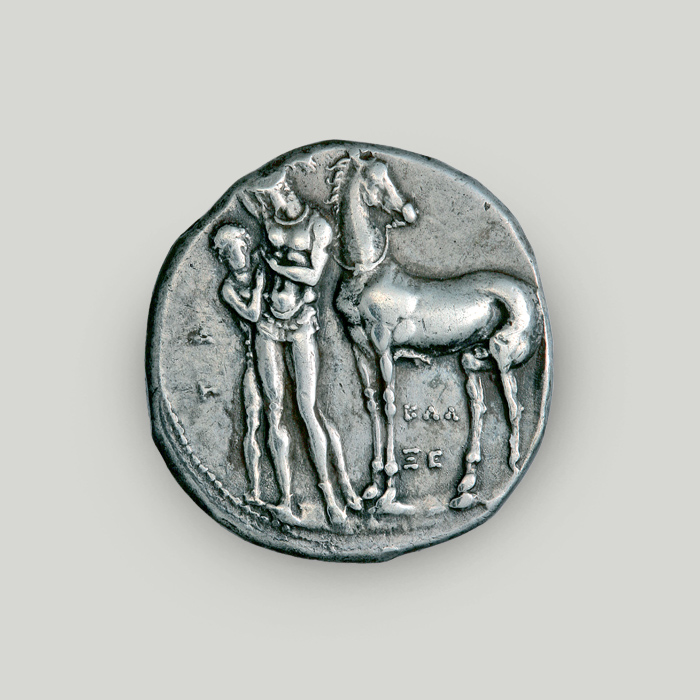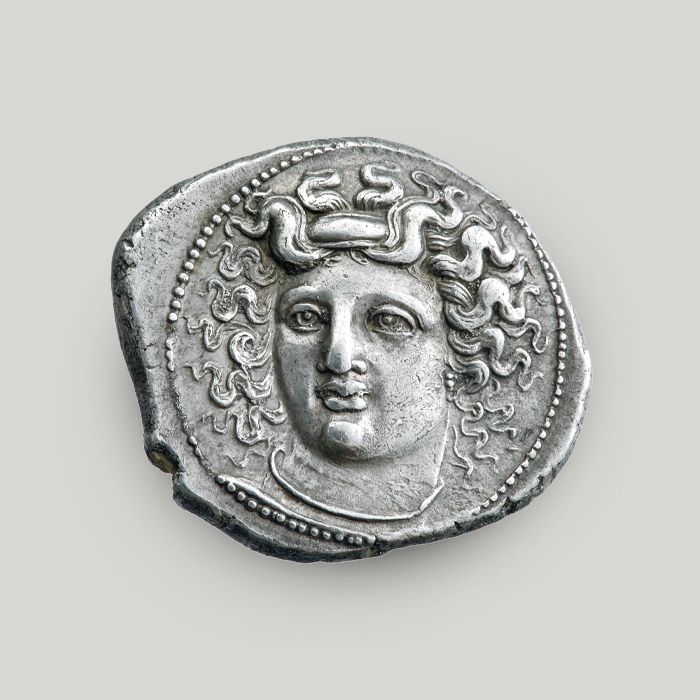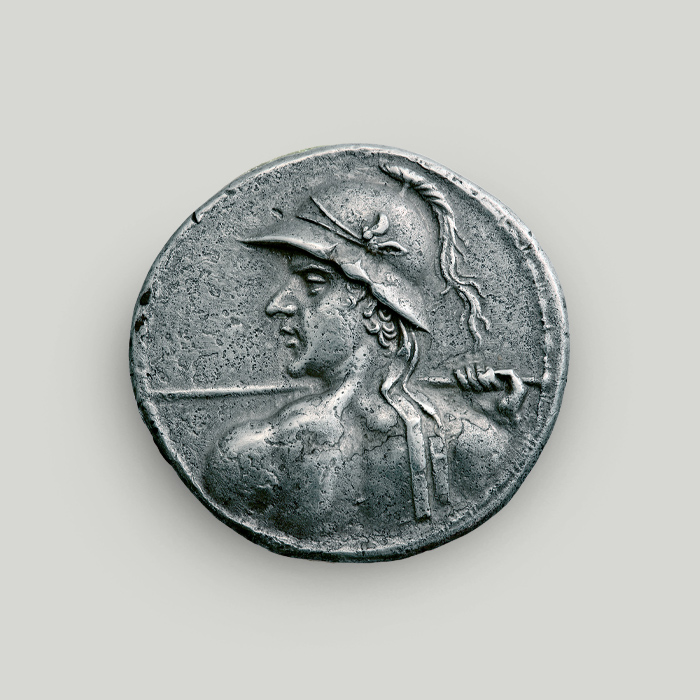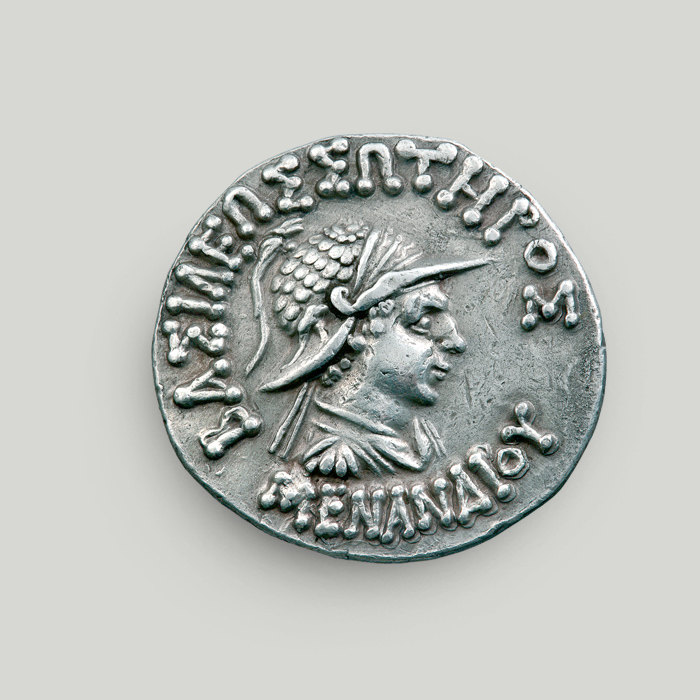Silver stater, Phaistos
The silver stater of Phaistos dates to 300-280/270 BCE. It is arguably one of the most beautiful coins minted in Phaistos. It depicts the most impressive winged figure in Cretan mythology: Talos, the bronze giant automaton that is considered the first robot in human history. During the first half of the 5th century BCE, the Phaistos area in Crete was known for the earliest silver coins depicting the abduction of Europa.
Observe
Talos figure facing forward, his wings open and left arm raised, ready to throw the stone he is holding in his hand. The legend at the bottom reads ΤΑΛΩΝ (Talon).
Reverse
A bull charging to the right, his head lowered and his left hoof raised off the ground. The legend at the top reads ΦΑΙΣΤ[ΙΩΝ] (of the Phaistians).
Phaistos, a hub teeming with life
Phaistos was one of the most important hubs of the Minoan civilization, as well as the richest and most powerful city in southern Crete. It was a large, fortified city with extensive residential quarters, which was described as ευ ναιεταώσα (well-populated) by Homer in the Iliad.
In the late 7th century BCE, at least 2 temples were erected in the city, one atop the hill of the acropolis and another one on its southern slope. The second is probably associated with the worship of Rhea and Leto as a single deity.
Important inscriptions have been discovered at Agios Ioannis and Chalara, which was probably the administrative centre during the archaic phase of the city. One of the inscriptions is part of a testamentary law code from the late 6th century BCE.
Coinage in Phaistos
Phaistos minted its own coinage. The most ancient silver coins from Crete were produced at the Phaistos mint. These date to the first half of the 5th century BCE. They depicted the abduction of Europa.
One of the most impressive coins issued by the city is the silver stater depicting the winged bronze giant Talos.
The abduction of Europa
The bull depicted on the reverse of the coin is Zeus. The powerful god took the form of a bull to snatch King Aegenor’s daughter Europa from the Phoenician coast.
As a bull, he took Europa to the shores of Crete. To soothe the fear-stricken girl, he promised her that the continent to which the island belonged would be named after her.
Three sons were born to Zeus and Europa: Minos, Radamanthys and Sarpedon.
When the god eventually left Europa, she married the king of Crete Asterion, who took her sons as his own.
Therefore, after Asterion’s death, Minos was crowned king of Knossos and managed to unite the cities of Crete, becoming a fair ruler to the entire island.
Talos, a gift for Europa
The bronze giant depicted on the obverse of the silver stater of Phaistos was a mythical masterpiece forged by Hephaestus, god of fire, and a feat of creative genius and metalwork. As a fine craftsman with a resourceful mind, Hephaestus possessed great skill in metalwork.
During the preparations for his sacred marriage to Europa, Zeus asked Hephaestus to create a unique gift for his wife-to-be. Hephaestus then forged Talos, a winged giant automaton of bronze, who would protect the entire island of Crete.
With Phaistos as his base, Talos patrolled the island from one end to the other 3 times a day. As a sentinel, he was not supposed to let anyone near. When he saw enemy ships approaching the Cretan shores, he threw boulders to keep them at bay.
If an intruder did manage to set foot on the island, Talos would heat his bronze body in the fire and burn the enemy by locking them in his blazing-hot embrace.
The end of the first robot ever imagined
Talos is considered the first robot in human history. The secret of his immortal body lay in his single vein. It ran from his neck down to his heel. There, it was plugged with a metal spike. Flowing in this vein was not blood, but ichor, the aetherial golden fluid coursing through the veins of gods and immortals.
Talos met his end when he encountered the Argonauts on their way back from Colchis. When the bronze sentinel saw Jason’s ship Argo approaching, he started throwing boulders at it.
That is when the witch Medea, who was aboard the Argo, enchanted the giant with a spell so that Jason could approach him and pull the spike plugging his single vein. All the life-giving ichor poured out, and Talos dropped dead.
Staters in antiquity
The word “stater” corresponds to an ancient coin denomination. Etymologically, it is derived from the Phoenician schequel, which denoted a coin weighed to comply with a specific standard.
The weight of a stater varied significantly by region, and according to the weight standard applied by the mint.
The coin in our publications
The silver stater of Phaistos is mentioned in the book Cretan Cities. The Testimony of Coins by N. C. Stampolidis, D. Tsangari, M. Giannopoulou. The publication presents 124 Classical and Hellenistic coins from ancient Cretan cities.
Buy the publication Cretan Cities. The Testimony of Coins on the Alpha Bank e-shop.
The Alpha Bank Numismatic Collection is not open to the public.
Research visits to the Numismatic Collection can be organised upon request.
Contact us to book your visit.
